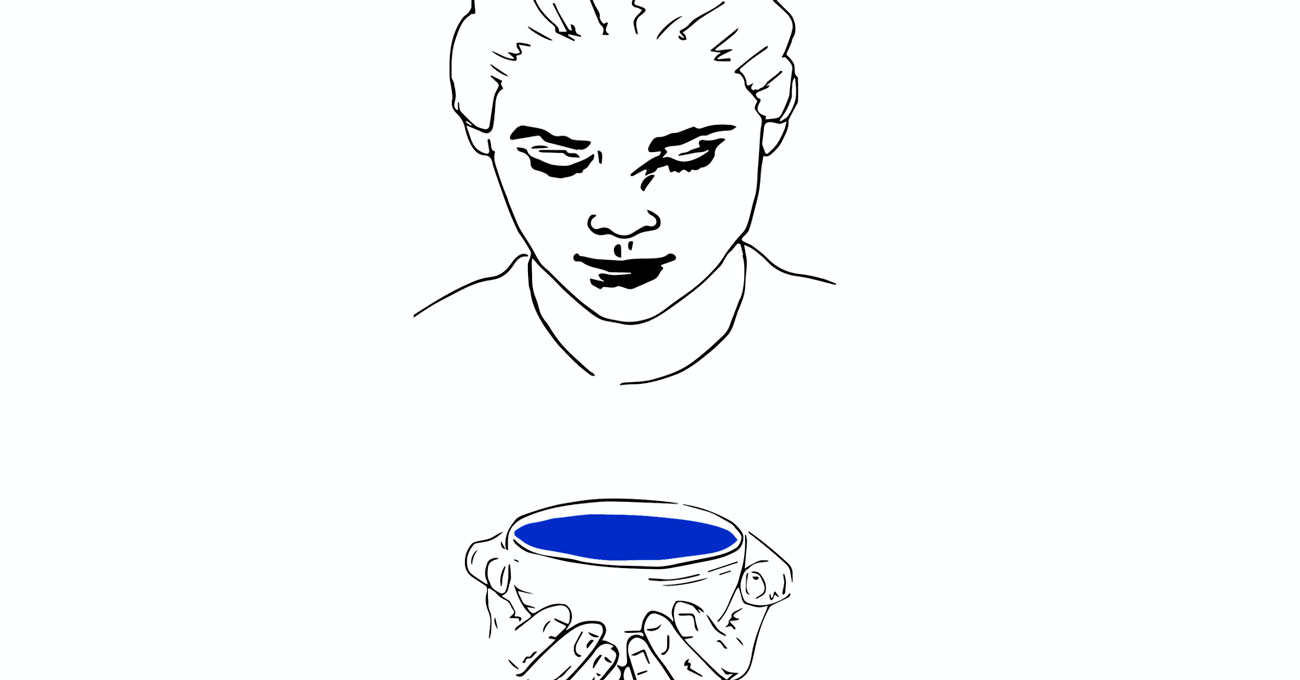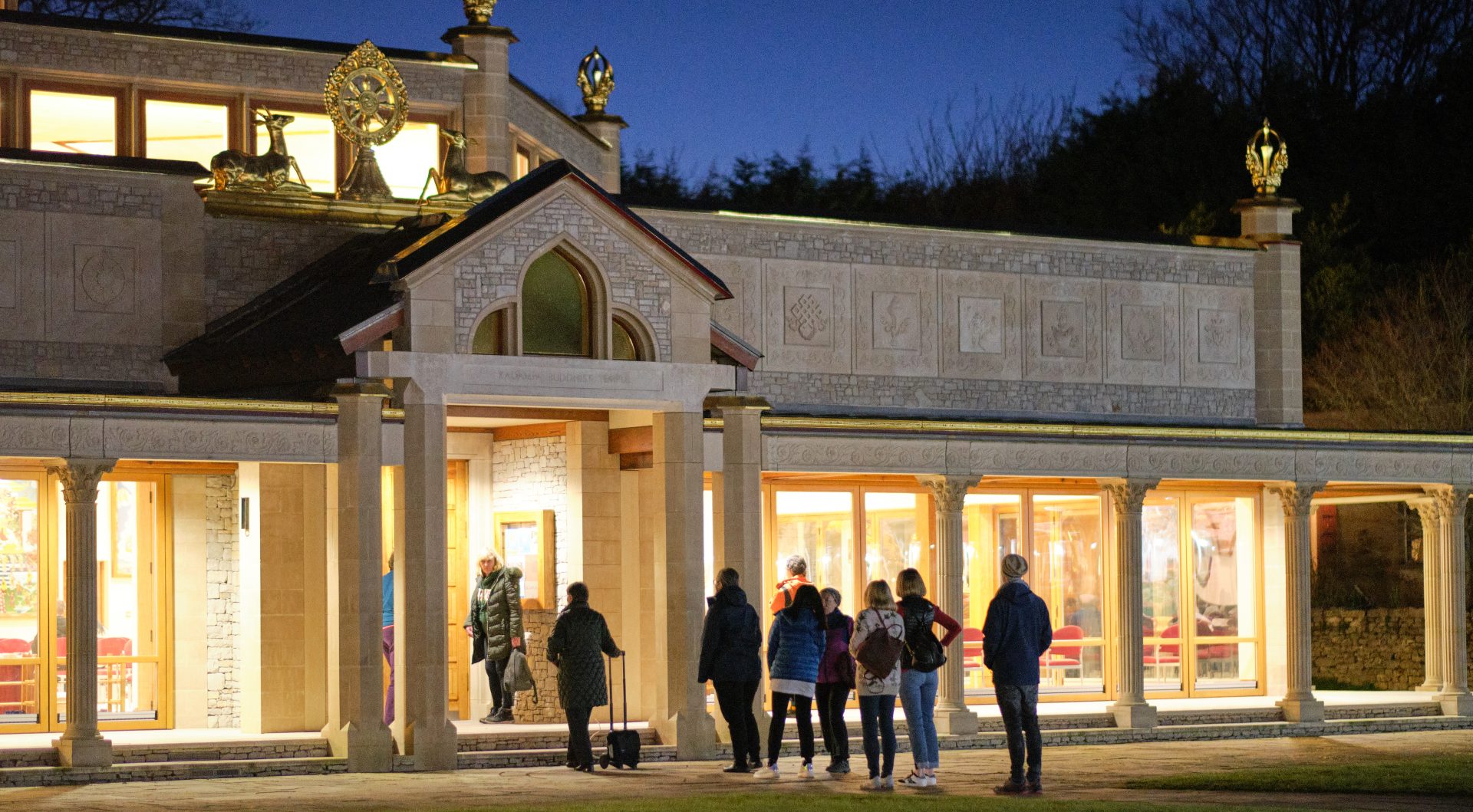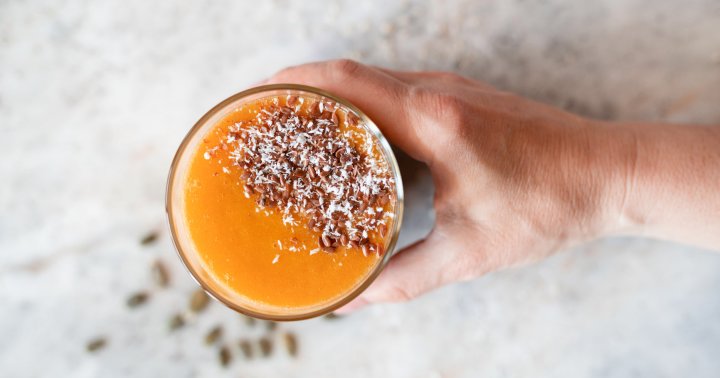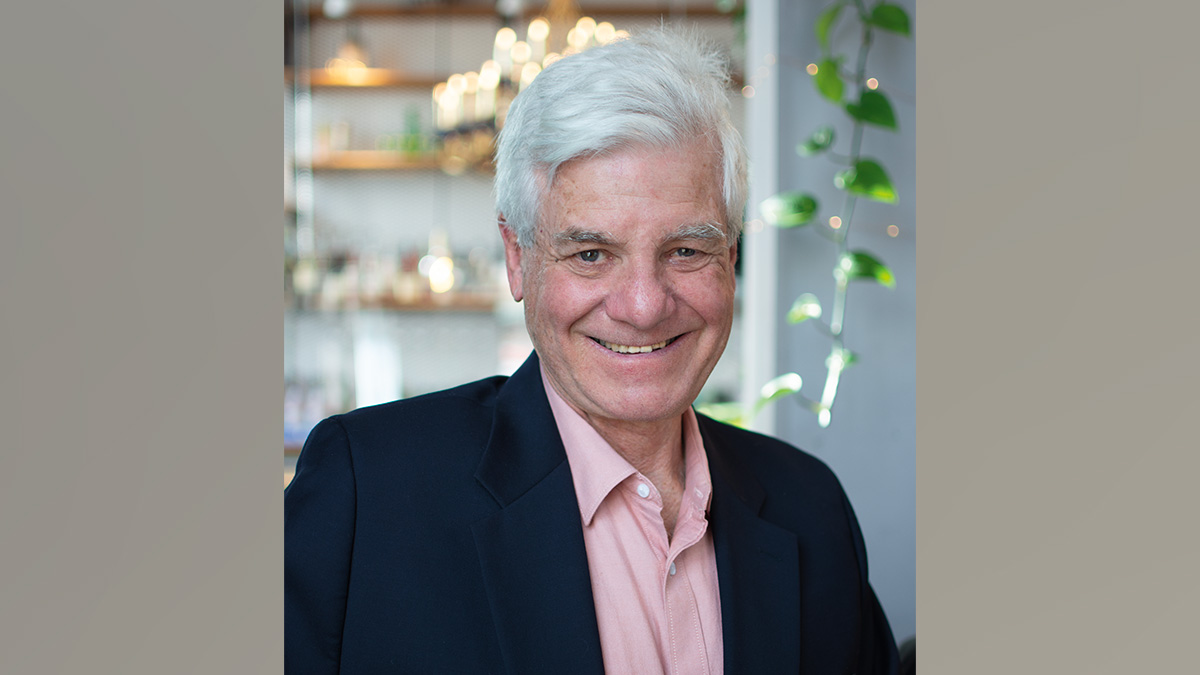10,000 Dharmas in a Bowl
A Zen chef on cooking for the Dalai Lama The post 10,000 Dharmas in a Bowl appeared first on Tricycle: The Buddhist Review.

Fourteen years ago, when Jonathan and Diana Rose created the magnificent Garrison Institute, a repurposed monastery on the banks of the Hudson River, they asked if I’d cook a meal for the Dalai Lama, who was coming to visit. I declined. Maybe insecurity got in the way, but it felt more like fear. Although I was well known as a chef with a Zen-like approach to cooking, I believed that the honor should go to a practitioner of Buddhism or at least someone who would be more fully awake to the experience than I would have been. Ever since, I’ve had a recurring thought whenever I shop, cook, or daydream. “What would I have made?” Sometimes the question makes me smile; other times it triggers great anxiety. But in the end, I realized that the food itself was not at all what mattered.
My search for a satisfactory answer to this question started with the Zen meal chant. I first uttered the meal gatha (a short verse for recitation) at the Garrison Institute not long after I declined the Roses’ offer. I fixated on the line “72 labors brought you this food; we should know how it comes to us.” It sounded so much like the contemporary value placed on “sustainability” and the goal to honor all the steps involved in getting a meal on the table. Where does it begin—with an embryo, a seed? Does it mean the farmer who plants the seed? The migrant who picks the grapes? The slaughterer who kills the calf? The trucker who hauls ingredients to market? The cook who washes grit from the field greens? The chef who prepares the soup? The artisan who crafted the bowl? The server who presents the food? The dishwasher who scours the pots? Yes, all of it. And so with every part of the meal, I would consider the source, and path, of each ingredient to fully sanctify its importance.
The Meal Gatha
First, 72 labors brought us this food, we should know how it comes to us.
Second, as we receive this offering, we should consider whether our virtue and practice deserve it.
Third, as we desire the natural order of mind to be free from clinging, we must be free from greed.
Fourth, to support our life we take this food.
Fifth, to attain our way we take this food.
First, this food is for the three treasures.
Second, it is for our teachers, parents, nation, and all sentient beings.
Third, it is for all beings in the six worlds.
Thus we eat this food with everyone.
We eat to stop all evil,
To practice good,
To save all sentient beings.
The “Five Contemplations” verse, as translated by the Soto Zen Text, presents a similar sentiment to that of the meal gatha: “We reflect on the effort that brought us this food and consider how it comes to us.” Considering, to me, goes deeper than knowing, for how can anyone really know? An alternate translation by Plum Village, the homestead of late Buddhist teacher Thich Nhat Hanh, puts it rather succinctly: “This food is the gift of the whole universe—the earth, the sky, and much hard work… In this food I see clearly the presence of the entire universe supporting my existence.”
Seventy-two labors, then, symbolizes the infinity of conditions bringing us our food at any given time, representing all efforts that contribute to life (inside or outside the monastery), past or present. I also have read that the number 72 refers to the posts within the monastery, including those of the abbot, administrators, and the cook.
There are other, more complicated, explanations: that at age 72 the Buddha preached the Lotus Sutra, or that it’s related to the 72 devas, or to the 72 words with which Brahma saved the world. These references, too obscure for me, might be of interest to His Holiness. In any case, it is clearly an important number.
I was familiar with the idea of oryoki and wondered if this style would appeal. Oryoki, meaning “just the right amount,” is the formal monastic ceremonial meal eaten during sesshin (Zen meditation retreats) and is one of the tradition’s most essential rituals. It is a precise and conscious way of eating—choreographed to the minutest detail. The meal is served in three to five bowls, with elaborate napkin folding, utensil placement, and frequent bowing.
Lovely to watch, but I want my imagined meal for the Dalai Lama to be of a more casual nature. I will serve the main course in one beautiful bowl—preferably a bartered one—and design its contents to be eaten with chopsticks, and then, with his hands cradling the still-warm vessel, drink the remaining broth until the very vapor was gone. This preserves the sacredness of the bowl—the “miraculous utensil” (the 13th-century Zen master Eihei Dogen called it). I would suggest that he eat the first course with his eyes shut and the last course with his fingers, engaging all the senses.
Daido Loori Roshi, the late abbot of the Zen Mountain Monastery in upstate New York, says “A meal is a state of consciousness that we receive with great gratitude. Whether it’s cabbages or cows, it’s life that we consume. That’s the nature of life on this planet. We nourish and sustain each other with our lives and the truth of 10,000 dharmas is revealed… Food is thusness. We begin by giving and receiving and in that process there is unity and perfect harmony. A meal is the dharma nature.”
I vowed to be fully awake to that idea as I planned His Holiness’s menu. Ten thousand dharmas in a bowl sounded good to me.
When preparing any meal, I always try to anticipate and consider the desires and priorities of my guests. I had assumed the Dalai Lama was a vegetarian but that is not the case outside of his residence at Dharmasala. I’m told His Holiness eats meat following doctor’s orders. So I was free to choose whether to include “flesh” in my menu while remaining mindful of the Buddhist reluctance to “taking life.”
I initially had planned something vegetarian—a beautiful bowl of soup, the color of saffron, flecked with edible gold and brimming with the finest soba noodles. Then, Eureka! I happened upon a recipe in the New York Times for one of His Holiness’ favorite dishes—momos. These Himalayan treats are juicy beef dumplings perfumed with ginger, onion, and cilantro and shaped like half-moons. In Tibet, finding beef (or yak) is not so easy, but finding grain to make the thin wafers of dough is even more difficult. Momos are generally made for Losar, the Tibetan New Year, a holiday that incorporates the comforts of food.
The narrative for my menu was beginning to take shape. Resolving what to feed someone engenders awe and humility. It goes beyond verbal communication into a more sacred realm. It is intention, without words. A fragrant way to awaken.
I n his Instructions for the Tenzo (the head cook of a monastery), Dogen Zenji wrote that a tenzo should have three important qualities: Joyful Mind, Great Mind, and Mature Mind. According to the Zen teacher Eido Shimano Roshi (1932-2018), “Cooking is not only the preparation of food but a practice of spirituality. It means not wasting even the stem of a vegetable.” (A new generation of American chefs has recently taken this value to heart unaware, perhaps, of the Buddhist practice.) “It involves an economy of movement, punctuality, and beauty of presentation. These are the elements that make our lives spiritually rich.”
In addition, being fully awake in the kitchen leads to what is known as “spontaneous generosity,” an awareness about using everything and offering whatever food you have.
The tenzo’s responsibilities go beyond cooking, to ensuring that all the ingredients gathered will become nutritional meals to sustain the monks during work and sesshin. My menu must be creative enough not to waste one morsel and substantial enough (“just the right amount”) to satisfy His Holiness until the early hours of the morning. As an ordained Buddhist monk, he does not have dinner. He does, however, take tea at 6 p.m.
The Zen Monastic Standards (a 12th-century work by Changlu Zongze) states that the tenzo “puts the mind of the Way to work, serves carefully varied meals appropriate to each occasion, and thus allows everyone to practice without hindrance.”
In the Zen tradition, the preparation of food is considered a sacred act. The cook’s intention is to handle each slice of radish, grain of rice, or leaf of mustard green as if it were the sixteen-foot golden body of the Buddha. My menu needs to fulfill this obligation. “The right qualities of heart and mind in cooking are just as important as a stove or a knife,” said the tenzo at the Dai Bosatsu Zendo perched high atop a mountain in the Catskills. I wonder what he would make.
I recently learned the concept of takuhatsu—a traditional form of collecting alms by Zen monks-in-training who beg for their food. In return, the monks give the dharma (Buddhist teachings). In India this was the only way that monks were able to eat—from the food they were given in their begging bowls (“the miraculous utensil”). Later in China and Japan, monks began farming and growing all their own food, making takuhatsu dispensable—except for getting money or, perhaps, for more spiritual reasons.
There’s something here that I like! What if I engaged in takuhatsu and thereby gave everyone in the community the honor of participating in the Dalai Lama’s menu? I am happy with this notion! It feels organic and timely locavore. I would go from farmer to fisherman, beekeeper to shopkeeper, baker to brewer, from home to hut, with a large basket in each hand. I would humbly say that I was cooking for the Dalai Lama. What would they like to offer? Needless to say, I don’t need their food, but in the spirit of giving and receiving and giving again, it feels that the whole sangha would be involved in this divine meal. At that moment, in a gust of spontaneity, I would create the menu around what I received. It is actually the way I most enjoy cooking. I value this idea because it leads to sanshin: that of magnanimous mind (by inviting everyone to participate); joyful mind (creating something out of nothing with whatever is available), and tender mind (a loving state of giving and receiving.)
By stripping recipes to their essence, I can fully appreciate the value each ingredient brings to a dish. When I inhale the sweet perfume of a ripe red pepper I can intuit the flavor it might add to the recipe; when I see the green-gold color of a first-pressed extra-virgin olive oil I can imagine its taste before it reaches my tongue. My menu will use seemingly prosaic ingredients treated with the same reverence and nuance of a sommelier sniffing the aroma of a rare vintage before finally discerning its myriad flavors upon the palate. This idea can be easily applied to fill our “miraculous utensil.” The ingredients for our menu would certainly be fresh and seasonal. There is a Japanese proverb I love that has always informed my cooking: “If you can capture the season on the plate, then you are the master.”
It has been said, “Imagination is the instrument of compassion.” There are many ways to interpret this but I believe that the creation of something “out of nothing” connects one human being to another—through art, music, literature, or cooking, and has the potential to heal or spark something divine in each. All this adds up to “mindfulness” says Jan Chozen Bays Roshi, a co-abbot of Great Vow Zen Monastery in Clatskanie, Oregon, and the author of Mindful Eating: A Guide to Rediscovering a Healthy and Joyful Relationship with Food. “Mindfulness,” she says, “is the most powerful tool for assessing the sacred aspect of eating.” And very imaginatively she adds, “mindfulness is the best seasoning you can add to food.” There are many ways to nurture and nourish. As I create my menu, I will use mindfulness as the predominant spice. And I will cook in silence, listening to the sounds of the kitchen for instruction.
We usually think that cooking involves our five senses: sight, sound, smell, touch, and taste, but I’d add “contemplation” as a sixth. In planning my meal, I would consider the “seven hungers” described by Chozen Roshi—eye hunger, nose hunger, mouth hunger, stomach hunger, cellular hunger, mind hunger, heart hunger. And I would consider all the taste elements of sour, salty, bitter, sweet, umami, and astringency. Does the Dalai Lama like cilantro? An enzyme in it makes it taste like soap for many people. But it is an important component of Asian cooking and in his beloved momos, so I believe he does.
Each bite would contain a bit of mystery and history; to paraphrase Lawrence Durrell when he spoke of olives—“a taste older than water.” And I would learn to make sepen—the fiery, blood-red hot sauce of Tibet, often used to accompany momos.
While I begin preparations, I will check in with my emotions. At Zen Mountain Monastery, I asked Sankai, the head cook, whether he believed that his feelings were “revealed” in his food. “Absolutely,” he exclaimed. If he feels angry or agitated any time that he’s cooking, “he simply steps out of the kitchen until that mood passes.”
At times I have been aware of my own emotions becoming infused into my cooking, unintentionally affecting the outcome of the food. Recently, a close friend, going through a terrible time in her marriage, made cupcakes that were inadvertently as salty as the sea, despite the fact that she has made them for us, buttery and sweet, for decades. Roiled by tears, her emotional state was unveiled.
This idea is also expressed by the authors of Prince Wen Hui’s Cook, Bob Flaws and Honora Wolfe: “Like every other aspect of our phenomenal reality, food is affected by how we think about it. From this point of view one’s spiritual state directly affects the quality of the food which then affects one’s health for better or worse.”
I would consider all of this as I prepare a meal for His Holiness. I was ready.
As my journey came to an end, I realized that the menu itself was not what was important. It was the numinous process of how to figure it out, and how to be fully awake to the experience.
So what would I cook if you asked me today? First, I would serve His Holiness three momos. Then, in the “miraculous utensil” I would pour a fragrant broth, the color of his robe, perfumed with saffron, lemongrass, holy basil, and earthy shiitakes. In it would be barely poached vegetables and the finest soba noodles imaginable. On top would shimmer bits of edible gold, to symbolize the golden Buddha. And for dessert? A sacred recipe of my own: Venetian Wine cake, flavored with lemon, rosemary, red wine, and olive oil, to be eaten with his hands, slowly and mindfully, until the very last crumb is gone. Once upon a time, this cake was made and sold by Greyston Bakery. Founded by the Zen teacher Roshi Bernie Glassman in Yonkers, the bakery is now known for its open hiring process offering transitional employment for people leaving correctional facilities. They are still the keepers of my secret recipe.
But, as the seasons change, and conditions change, and I change, I may yet opt for takuhatsu and beg for my ingredients. As a reminder of the interconnection of all life, I would share the honor with others, and spontaneously create a meal from what has been offered. In that way, I can return to a state of “not knowing”—which is where this all began.

 Kass
Kass 
































